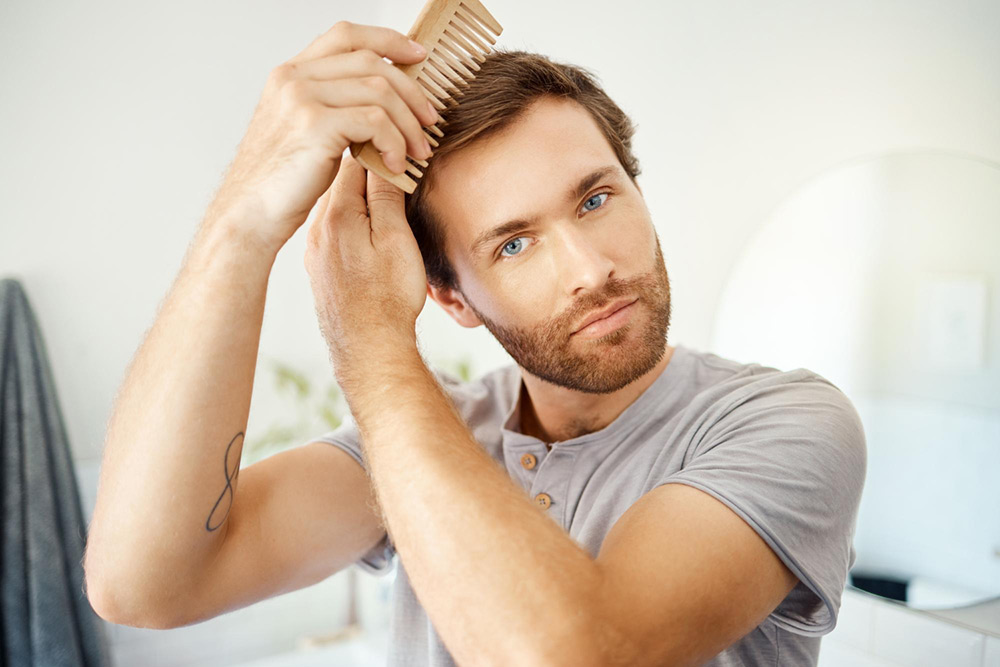How Hair Transplants Restore Natural Hair Growth
Understanding Hair Transplant Science

Hair loss is a prevalent concern affecting many individuals worldwide. It can result from various factors, including genetics, hormonal changes, aging, or certain medical conditions. For those experiencing hair loss, hair transplant procedures have emerged as a promising solution to restore natural hair growth and rebuild confidence. In this comprehensive guide, we delve into the intricate science and process behind hair transplants, shedding light on the detailed mechanisms that contribute to their success.
Understanding Hair Loss: The Root Causes
Hair loss can be caused by a myriad of factors. Genetic predisposition, hormonal imbalances, stress, nutritional deficiencies, and certain medical treatments are among the common culprits. Understanding the underlying cause is crucial in determining the most effective treatment for each individual.
Science Behind Hair Transplants: How It Works
Hair transplant procedures involve the strategic extraction of healthy hair follicles from donor sites, usually the back or sides of the scalp, which are more resistant to balding. These follicles are then meticulously transplanted into areas experiencing hair thinning or baldness.

Donor Site Selection
Surgeons meticulously choose the donor site for hair transplants, typically located at the back or sides of the scalp, known as the 'safe zone.' This area harbors healthy and genetically-resistant hair follicles that are less prone to balding. The careful selection of the donor site is paramount as it ensures that the transplanted hair will retain its resistance to hair loss, continuing to grow naturally even after transplantation. This strategic approach maximizes the longevity and effectiveness of the hair transplant procedure, providing lasting results for the patient.
Extraction of Hair Follicles
Hair follicles are extracted using two primary techniques: Follicular Unit Transplantation (FUT) and Follicular Unit Extraction (FUE).
In FUT, a narrow strip of scalp is surgically removed from the donor area, typically under local anesthesia. The strip is then meticulously dissected into individual follicular units, each containing one to four hairs. This method allows for the extraction of a large number of follicles in a single session, making it suitable for patients requiring extensive hair restoration.
On the other hand, FUE is a minimally invasive approach where individual follicular units are extracted directly from the scalp using a specialized punch tool. This precise method preserves the natural appearance of the donor area and minimizes scarring. While FUE requires considerable skill and expertise to avoid damaging the follicles, it offers the advantage of faster recovery and minimal discomfort for the patient.
Direct Hair Implantation (DHI) is another innovative technique used for hair transplants, offering certain advantages over traditional methods. In DHI, hair follicles are extracted one by one using a microsurgical tool called a Choi implanter pen. This pen simultaneously creates recipient sites and implants the grafts, allowing for precise control over the angle, depth, and direction of hair growth. DHI eliminates the need for pre-made incisions, resulting in a faster and more efficient procedure with minimal handling of the grafts. Additionally, DHI enables the transplantation of hair into areas with existing hair, making it suitable for enhancing hair density and achieving natural-looking results.
What Should I Do After Hair Transplant?
After undergoing a hair transplant procedure, it's essential to follow specific post-operative care instructions to facilitate healing and ensure the optimal growth of transplanted hair. Firstly, avoid touching or scratching the transplanted area to prevent dislodging of the grafts. It's also crucial to refrain from vigorous physical activities, heavy lifting, and strenuous exercise for the first few weeks following the surgery to minimize the risk of complications and promote proper healing. Additionally, adhere to any prescribed medications, including pain relievers and antibiotics, to manage discomfort and prevent infection. Lastly, maintain good scalp hygiene by gently washing the hair as instructed by your surgeon to keep the area clean and free from debris.
What Is the Best Thing to Do After Hair Transplant?
The best thing to do after a hair transplant is to prioritize rest and recovery while following the guidance provided by your surgeon. This includes avoiding activities that may strain the scalp or disrupt the healing process, such as excessive bending or heavy lifting. It's also essential to keep the scalp clean and moisturized according to your surgeon's recommendations to promote proper healing and prevent infection. Additionally, maintaining a healthy lifestyle with a balanced diet and adequate hydration can support overall recovery and optimize the results of the transplant.
How Do I Take Care of Myself After Hair Transplant?
Taking care of yourself after a hair transplant involves following a set of guidelines to ensure optimal healing and hair growth. This includes avoiding exposure to direct sunlight, which can irritate the scalp and cause discomfort, especially in the early stages of recovery. It's also crucial to protect the newly transplanted hair from trauma or friction by wearing loose-fitting clothing and avoiding tight hats or headbands. Additionally, refrain from smoking and consuming alcohol, as these can interfere with the body's healing process and affect the outcome of the transplant. Lastly, prioritize regular follow-up appointments with your surgeon to monitor progress and address any concerns during the recovery period.
Hair Transplant Recovery Time: How Long Is Recovery from Hair Transplant?
The recovery time from a hair transplant can vary depending on individual factors such as the extent of the procedure, the patient's overall health, and adherence to post-operative care instructions. In general, patients can expect to see initial signs of healing within the first week after the surgery, with any discomfort or swelling gradually subsiding over the following weeks. However, complete recovery and the full results of the transplant may take several months to become apparent as the newly transplanted hair follicles enter the growth phase. It's essential to be patient and follow the recommended post-operative care regimen to ensure the best possible outcome.
Hair Transplant Recovery Process: Stages of Hair Transplant Recovery
The hair transplant recovery process typically consists of several stages, each with its own set of challenges and milestones. In the immediate aftermath of the surgery, patients may experience mild discomfort, swelling, and scabbing around the transplant area, which usually resolves within the first week. Over the next few weeks, the transplanted hair follicles enter a resting phase, and some shedding may occur, which is a natural part of the healing process. Subsequent stages involve the gradual growth of new hair, with noticeable results becoming apparent within three to six months post-transplant. Full recovery and the final aesthetic outcome can take up to a year or more, during which regular follow-up appointments with the surgeon are essential to monitor progress and address any concerns.
Best Age for Hair Transplant: At What Age Can I Get a Hair Transplant?
The best age for a hair transplant depends on various factors, including the extent of hair loss, overall health, and personal preferences. While there is no specific age limit for undergoing a hair transplant, it's generally recommended for individuals who have reached adulthood and have stable hair loss patterns. This typically occurs in the late twenties to early thirties for most men, although individual cases may vary. It's essential to consult with a qualified surgeon to assess your candidacy for a hair transplant and discuss the most appropriate timing based on your specific needs and expectations.
Hair Transplant Preparation: How to Prepare for Hair Transplant Surgery
Preparing for a hair transplant involves several steps to ensure a successful procedure and optimal recovery. Firstly, schedule a consultation with a qualified surgeon to discuss your goals, medical history, and any concerns you may have about the surgery. Your surgeon will evaluate your scalp condition, assess your suitability for the procedure, and provide personalized recommendations for preparation. This may include discontinuing certain medications that can interfere with the surgery, avoiding smoking and alcohol, and following any pre-operative instructions provided by your surgeon. Additionally, arrange for transportation to and from the surgical facility on the day of the procedure and plan for time off work or other commitments to allow for adequate recovery.
Hair Transplant Turkey Recovery Time
The recovery time from a hair transplant in Turkey is similar to that of procedures performed elsewhere. Patients can expect to experience some discomfort, swelling, and scabbing in the days following the surgery, which gradually improves over the first week. Most patients are able to resume normal activities within a few days to a week after the procedure, although strenuous exercise and heavy lifting should be avoided for several weeks to minimize the risk of complications. Complete recovery and the full results of the transplant may take several months to become apparent, with regular follow-up appointments with the surgeon recommended to monitor progress and address any concerns.














